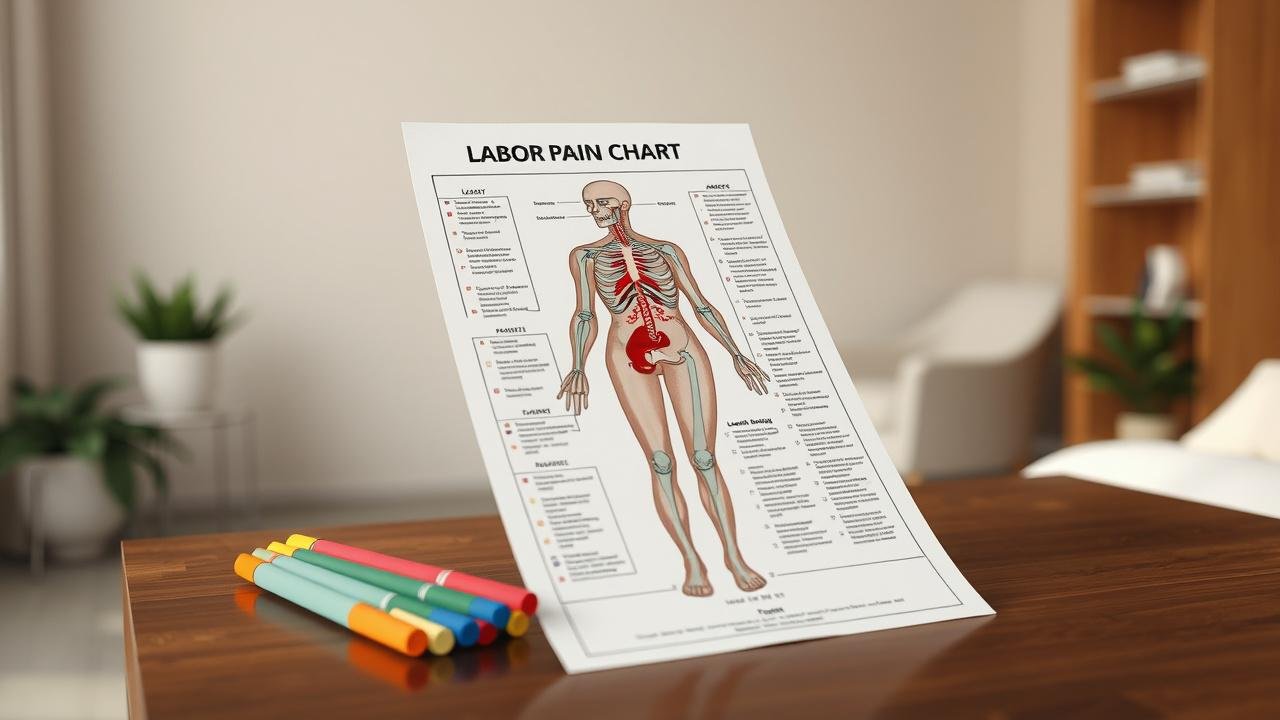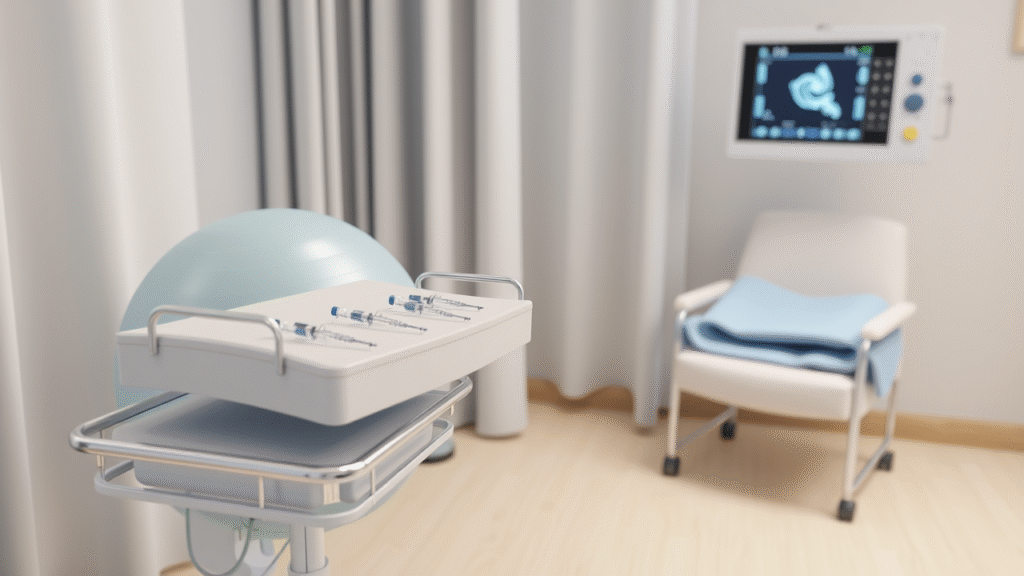Labor pain is a complex and deeply personal experience that varies widely from one person to another. This blog dives into the many facets of managing pain during childbirth, starting with an understanding of how pain changes throughout labor. We explore natural methods like breathing and movement alongside medical options such as epidurals and narcotics. By weighing benefits, risks, and the role of support, we provide a comprehensive look at how to personalize pain relief. Finally, we address postpartum discomfort to help new parents navigate recovery with confidence. Each section builds on the last to offer a full picture of effective labor pain management.
Understanding the Different Types of Pain Experienced During Labor
Understanding the different types of pain experienced during labor is fundamental to effective pain management. Labor pain varies in sensation, intensity, and location as contractions progress, often beginning with dull, cramping discomfort in the lower abdomen and evolving into sharper, more localized pressure in the pelvic area. This nuanced experience influences how women respond to various relief methods discussed later in the blog—whether natural techniques like breathing and movement or medical interventions such as epidurals. Recognizing these pain variations helps personalize pain management plans by matching strategies to each stage’s unique sensations. It also informs decisions around timing medication or support person involvement to optimize comfort. Moreover, awareness of pain types aids in anticipating postpartum discomfort and recovery challenges. By grasping labor’s complex pain landscape, expectant mothers can better navigate options from relaxation practices to pharmacological choices, ultimately fostering a more empowered and tailored childbirth experience.
How Pain Intensity and Location Change Throughout Labor Stages

Pain intensity and location evolve distinctly as labor progresses, shaping how expectant mothers experience and manage discomfort. Early labor often brings mild, intermittent cramping centered in the lower abdomen, linked to cervical dilation. As labor advances into active phases, pain intensifies and shifts toward the lower back and pelvic region due to stronger uterine contractions and fetal descent. Understanding this dynamic is crucial for selecting effective relief methods discussed in sections like natural techniques—breathing and movement can ease early-stage discomfort—while medical interventions such as epidurals become more relevant when pain peaks during active labor. This progression also highlights why personalizing pain management plans matters; timing and pain location influence which strategies best suit an individual’s needs. Additionally, recognizing these changes helps support persons create a calming environment tailored to each stage, enhancing overall comfort throughout the birthing process.
Natural Pain Relief Methods: Exploring Breathing, Movement, and Relaxation Techniques
Natural pain relief methods during labor focus on harnessing the body’s innate ability to cope with contractions through controlled breathing, gentle movement, and relaxation techniques. These approaches offer a non-invasive way to manage discomfort, complementing insights from the section on how pain intensity and location shift as labor progresses. By emphasizing mindfulness and physical awareness, breathing patterns can help regulate pain perception and reduce anxiety without relying on medications discussed in the medical interventions section. Movement, such as walking or changing positions, promotes comfort and may ease labor progression while relaxation strategies like visualization or massage create a calming environment that aligns with the role of support persons in enhancing pain management. Exploring these natural options provides a foundation for personalizing pain management plans, ensuring mothers can blend holistic practices with medical choices like epidurals if desired. This integrative approach supports both effective coping during labor and smoother postpartum recovery.
Medications and Medical Interventions: Comparing Epidurals, Narcotics, and Other Options

Medications and medical interventions play a crucial role in managing labor pain, offering varying levels of relief tailored to individual needs. Epidurals provide targeted, effective numbness to the lower body, often preferred for intense contractions during active labor, while narcotics offer systemic pain reduction but may cause drowsiness or affect the baby’s alertness. Other options like spinal blocks or local anesthetics serve specific purposes depending on labor progress and delivery method. Comparing these interventions involves weighing their benefits against potential side effects, a theme closely linked to the blog’s broader discussion on balancing natural techniques and medical solutions. Understanding how pain evolves through labor stages, as covered earlier, helps determine when such interventions become appropriate. This section also connects with personalized pain management strategies by emphasizing informed choices that respect a birthing person’s preferences and medical needs, ensuring comfort and safety throughout the childbirth experience.
Weighing the Benefits and Risks of Epidurals Versus Alternative Pain Management Strategies
Weighing the benefits and risks of epidurals versus alternative pain management strategies is crucial in crafting an effective labor experience. Epidurals offer significant relief by numbing lower body pain, but they may come with side effects such as lowered blood pressure or limited mobility. In contrast, natural methods like breathing, movement, and relaxation techniques provide a drug-free approach that encourages active participation in labor while minimizing interventions. This balance ties closely to understanding the types and intensity of pain during various labor stages, as explored earlier, helping expectant mothers anticipate when different methods might be most effective. Additionally, considering the role of support persons and environment enhances these choices by fostering comfort regardless of the selected strategy. Ultimately, integrating knowledge from medication options alongside personalized pain management plans allows for informed decisions that align with individual preferences and medical circumstances, ensuring a more empowered and responsive approach to managing labor pain.
The Role of Support Persons and Environment in Enhancing Pain Management During Labor

Support persons and the labor environment play a crucial role in enhancing pain management during labor, acting as vital complements to both natural and medical pain relief methods discussed elsewhere in the blog. Their presence can provide emotional reassurance, reduce anxiety, and create a sense of safety that helps moderate pain perception throughout the changing intensity and location of labor pains outlined in earlier sections. Supportive partners, doulas, or nurses often encourage effective breathing and relaxation techniques, reinforcing strategies highlighted under natural methods. Additionally, an accommodating environment—calm lighting, soothing sounds, or freedom of movement—can empower laboring individuals to better cope with discomfort before deciding on medications like epidurals or narcotics. This psychosocial aspect connects closely with personalizing pain management plans since comfort levels vary widely among individuals. Ultimately, integrating compassionate support and a nurturing setting enhances overall pain control effectiveness and improves birth experiences beyond just physical interventions alone.
Postpartum Pain and Recovery: Managing Discomfort After Labor and Delivery
Postpartum pain and recovery are crucial aspects often overlooked in discussions about managing pain during labor. After delivery, many new mothers face soreness, cramping, and tenderness as their bodies heal from intense physical exertion and possible interventions like epidurals or surgical deliveries. Understanding this phase complements earlier sections on labor pain types and intensity changes by highlighting that discomfort doesn’t end once the baby arrives. Effective postpartum pain management often draws from natural methods introduced during labor—such as gentle movement and relaxation techniques—while sometimes requiring medications similar to those discussed in the medical interventions section. Additionally, personalized plans remain essential here; what eased labor pain might need adaptation for recovery needs. Support persons and a calming environment also continue playing vital roles, helping reduce stress and facilitate healing. Addressing postpartum discomfort holistically ensures continuity in care, linking the journey from active labor through recovery with compassion and effective strategies.
Personalizing Pain Management Plans: Tailoring Strategies to Individual Needs and Preferences
Recognizing that each labor journey is unique, personalizing pain management allows birthing individuals to feel seen and supported in their choices. By blending natural methods with medical options based on shifting pain experiences and personal preferences, the process becomes more empowering and responsive. This thoughtful approach acknowledges the evolving nature of labor pain while honoring individual comfort levels and values. Through understanding, flexibility, and compassionate support—both from caregivers and loved ones—the path through labor can be navigated with greater confidence. At MomDadDispatch.com, we stand alongside families as they explore these deeply personal decisions with care and respect.






